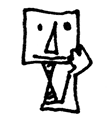
What if we got stuck in an endless February? Aldona Kopkiewicz looks at the sparrows from Hans Christian Andersen’s tale to reflect on transience, human existence in space and time, and the eternal cycles of nature.
The New Year begins on the first day of January, as we know. I must admit, however, that I’ve never wondered before why another time cycle starts on this particular date. It’s yet another year, but we tend to experience it as something radically new. The illusion of a new beginning is good for our mental health. Even though our psychic life consists of arduous and complex processes, this specific day – which encapsulates the drama of beginnings and endings, or welcomes and farewells – can be celebrated intensely, ecstatically and unequivocally. In that regard, New Year’s resembles a birthday.
There exists, however, an obvious reason why we celebrate our birthday on a particular day, whereas 1st January is set arbitrarily, at least for those of us who follow the Julian








